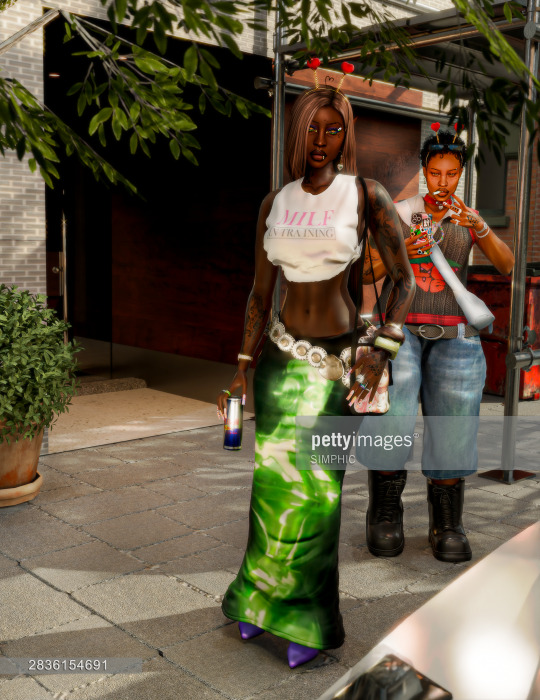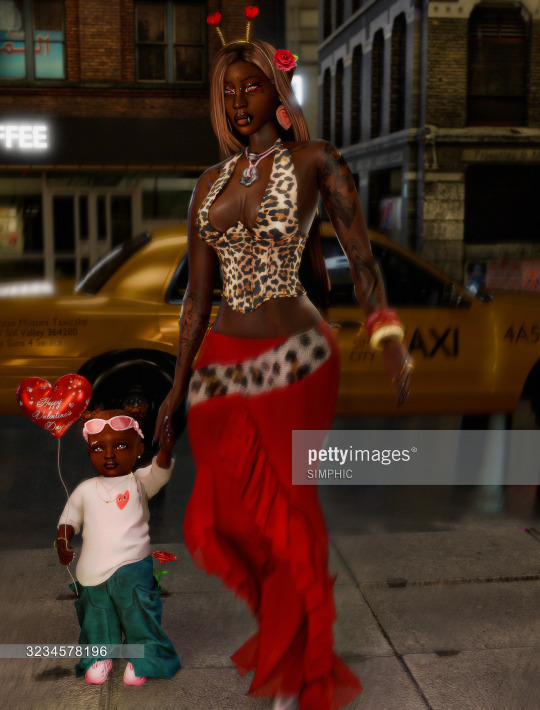#niecey
Text



Yas yesterday with their gf and her niece via pettyimages (2/14) ❤️
#ts4 render#ts4 edit#simblr#black simmer#sims 4 render#yas been giving me monster high ghoul gf vibes#niecey ahh she's so cute#they listened to rihanna the whole day#nani's tattoos yes god#gay aunties literally#the way i wanted to do more candids cause the fits r too gewd#probs will 4 other purposes#click for hq o.0?
130 notes
·
View notes
Text
paige boy mom bueckers is so real to me
#paige bueckers#paige bueckers x reader#paige bueckers smut#paige bueckers fluff#or the niecey poo story w the baby girl....she could also highkey be a girl mom#uconn#uconn wbb
58 notes
·
View notes
Text
White Police Officer Beats Elderly Black Woman to Death - Jun 12, 1945
On June 12, 1945, Niecey Brown, a 74-year-old Black woman, died from injuries after an off-duty white police officer named George Booker forcibly entered her house and beat her with a bottle in Selma, Alabama.
During the early morning on June 10, Officer Booker arrived at Mrs. Brown’s home unannounced. According to reports, when Mrs. Brown answered the door, Officer Booker demanded entry so he could speak with one of her family members. When Mrs. Brown refused him entry and asked him to leave, Officer Booker kicked in the door and began beating her with a bottle, fracturing her skull.
Lige Brown, Mrs. Brown’s husband, came to his wife’s aid and shot the officer in the shoulder in self-defense. The Browns’ two grandchildren were also home and witnessed the brutal attack on their grandmother. Two days later, Mrs. Brown, whose skull was crushed, died from her injuries, having never regained consciousness.
Officer Booker was arrested and charged with murder. During his trial in September 1945, his lawyer cautioned the all-white jury, “[I]f we convict this brave man who is upholding the banner of white supremacy by his actions, then we may as well give all our guns to the niggers and let them run the Black Belt.” The jury heeded this advice, ignoring eyewitness testimony and deliberating for only a few minutes before acquitting Officer Booker of all charges.
After the Civil War, the system of policing evolved as a way to maintain racial hierarchy. Though officers were meant to protect and serve their communities, in most cases police departments were restricted to white officers, many of whom used their power to subject Black people to indiscriminate violence. Officers who terrorized and brutalized Black people were rarely held accountable and were often instead exalted as defenders and upholders of racial hierarchy.
#history#white history#Niecey Brown#George Booker#Black history#am yisrael chai#us history#jumblr#republicans#democrats
7 notes
·
View notes
Text

MY POWER💥
30 notes
·
View notes
Text

5 minutes after getting her nose pierced “everything just looks better with a nose piercing” 💁🏼♀️well duh 😂
10 notes
·
View notes
Text
Fave Looks from the BET Awards Red Carpet
Fave Looks from the BET Awards Red Carpet
Halle Bailey in Avellano
Well, happy summer! Global warming is definitely a thing as it is piping hot outside. The Florida sun is like a sauna radiator. Anyway, did you watch the BET Awards last night? It’s always great to see black people doing great things. Usher received the Lifetime Achievement Award while newer artists like Tyla from South Africa were recognized as well.
And, of course, we…

View On WordPress
#Awards#BET#Coco Jones#Entertainment#Halle Bailey#Niecey Nash#red carpet#Veronica Nichols#Yung Miami
3 notes
·
View notes
Text
Dust, Volume 9, Number 11, Part 2

Eli Winter
We only get ten audio clips per post now, so we've split the Dust in two. Check out the early alphabet entries here.
Colin Miller — Haw Creek (Ruination)
Colin Miller’s songs come from far away, from a physical, temporal, emotional remove, like bits of colored memory or the line from a book that meant something once, but you now can’t quote exactly. The North Carolina-based multi-instrumentalist and home taper is connected to the Wednesday orbit, having played on and produced MJ Lenderman albums and produced Wednesday’s I Was Trying to Describe You to Someone. His own music is softer and more indefinite, but very fine. It is less like listening and more like being enveloped by a cloud. “I Don’t Love You Anymore,” for instance, has all the elements of an indie rocker: strummy guitars, punched out drums, and a catchy, tuneful melodic line. And yet it drifts in through the window like a warm breeze, gently stirring your attention as it moves the air around you. “Paper Roof,” too, buzzes with feedback and blistered bass tones, but very softly. What you notice, first, is the high yearning singing, shaded by the fuzz of lo-fi production. You wonder what these songs would sound like with clearer, more commercially viable sonics, whether they’d land with more impact or less. But here they are, gently pushed forward for you to appreciate best after repeat plays, and they are really quite good.
Jennifer Kelly
Niecy Blues — Exit Simulation (Kranky)
The reason the ol’ “this band is like x meets y” trope is both kind of reviled and yet impossible to wipe out is that as a formulation it’s both weak (unless you’re the person the comparison occurred to, chances are good you won’t hear it) and strong (how else to try and describe something as elusive as music than with something so slippery and paradoxical?). It might be better to imagine a kind of topographical map. Then you could try and chart the impossible hinterlands out where the territories of (say) Grouper, trip hop, and Kelela might converge, and somewhere around there you might find Niecy Blues’ first record. Like all such comparisons though, the intent is not to suggest Exit Simulation is mere pastiche or reducible to parts found elsewhere, but to indicate the heady and diverse contemporaries it shares an atmosphere with. Whether it’s the extended reverie of “U Care,” the hazy float of “Violently Rooted,” or the droning shuffle of “The Architect” the result is a debut of striking assurance and depth. Comparisons fail at some point; you really just have to give it a listen yourself and figure out your own map, like Blues has.
Ian Mathers
Bänz Öster and the Rainmakers — Gratitude (self-released)
This quartet consisting of Europeans Bänz Öster on double bass and Javier Vercher on sax and South Africans Afrika Mkhize on piano and Ayanda Sikade on drums delivers spiritual jazz rooted in the gentler music of Coltrane and Ra. The six long (eight to 12 minute) originals, well-recorded before an appreciative but fairly restrained audience, are uplifting and replete with sophisticated soloing, especially by Mkhize. These guys don’t break any new ground, but the grooves are infectious, and what is described in the liner notes as the “high-voltage connection between North and South” contributes to the good vibes.
Jim Marks
Pile — Hot Air Balloon EP (Exploding in Sound)
In case February’s All Fiction didn’t make it clear, the handful of songs from the same sessions that comprise the Hot Air Balloon EP should drive the point home that Pile is a band at the height of its powers. Recent live shows incorporating a few of these songs into setlists only go to further serve that the distinction between what made the cut for their latest full-length and what got left behind is virtually indistinguishable; some of Hot Air Balloon’s fun is in finding where these songs would’ve best worked their way into All Fiction’s track list. The knotty time signature changes and unexpected rock moments still weave and burst forth, and Rick Maguire’s addictive, meandering pathos carries moments you’ll be left thinking about long after it’s over; me personally, I can’t unlodge the descending chorus of “Exits Blocked” or the very specific line on “The Birds Attacked My Hot Air Balloon” where he sings, “I could see your house from here if I’d bothered to look.” It’s these stories in miniature, like Fitzgerald in The Crack-Up or Felix Feneon, that leave their mark most potently — if, of course, you’re inclined to that sort of thing.
Patrick Masterson
Taiko Saito /Michael Griener /Jan Order — WALD (Trouble In The East)
Free improvisation may be a creative space where an instrument’s baggage can be dropped, but this is easier for some than others. Given its limited and highly distinct sound, the vibraphone’s particularly hard to untether from expectation, but Taiko Saito gives it her best shot on WALD. The Sapporo-born, Berlin-based mallet-wielder, who has worked at length with Silke Eberhard and Satoko Fujii, does not totally play against expectation, but she does keep her instrument’s stylistic mandates at bay by shifting between time and no time, swing and no swing, and steering a middle course between the big wall of sound you might expect from, say, Jason Adasiewicz, and the bebop-derived suppression of resonance pursued by an earlier resonance. This CD documents her first encounter with bassist Jan Roder and drummer Michael Griener, who constitute Die Enttäuschung’s rhythm section, and that association will tell you more about their commitment to the moment than what they actually play. Each of the album’s four spontaneously realized tracks is a world unto itself in which chaos is courted, swing cultivated, or slipstreams ridden. These are woods to get lost in.
Bill Meyer
Skyphone — Oscilla (Lost Tribe Sound)
Lost Tribe Sound has been on something of a jag this year with their Maps to Where the Poison Grows series. This new installment by Danish trio Skyphone is an absorbing and succinct 32 minutes in which attention to detail, texture and instrumental interplay account for a lot. Ideas are introduced then carried through to their natural culmination, with each of the three players sounding present and laser-focused in their creative process. Live drum kit, bass, synths, piano, acoustic guitar, and a whole host of other instruments blown and struck are used to bring vivid color. Think early Mum, Opsvik & Jennings, and Kiln. Six of the seven songs here feel just right (centrepiece “Arbonaught” is especially good). It’s only on final track “Will to Change” that the introduction of heavily effected vocals knock things out of balance and breaks the spell. Elsewhere this is masterful and hypnotic stuff.
Tim Clarke
Stella Siebert/Nat Baldwin — 1.30.22 (Notice Recordings)
This live improvisation set from Stella Siebert — mixer, turntable, objects — and Nat Baldwin playing double bass celebrates special techniques and advanced sampling with chaotic jubilation. Sections are taken out of order (we never get to hear the opener), sculpting the set from free play to intentionality. The recording opens with abrupt samples alongside repeated string pressure. “4” has a bit too much piercing sine tone for my taste, but especially diverting is “9” which features crackling vinyl and ostinatos right at the edge between pitch and noise. The concluding track, “2,” is a 23-minute-long session in which Baldwin plays extended techniques against ostinato samples and handmade percussion. The previous material coalesces into an edgy opus that remains varied and imaginative throughout.
Christian Carey
Tar Of — Confidence Freaks Me Out (sound as language)
Tar Of makes music in brief, bubbly spritzes. Heavy on the keyboards, with giddy abstracted vocal parts, these cuts dance across your field of vision and disappear from view. “Ey Vaay,” the single, adds a bobbling saxophone line to the mix, caroming in from the margins as a dizzy pulse of “ba-ba-ba-ba-bas” push the track forward. “Cardinal” clicks and rattles and swells with wordless counterparts. You’ll need to take a breath when it clatters to a halt. The title track is somewhat more song-shaped, with its stabbing snare beat and woozy woodwinds; it seems to be taking on conventional verse-chorus structure when it breaks apart into vibrating, shimmering atoms. The band is a duo from Brooklyn, made up of two oddball artists—Ariyan Basu and Ramin Rahni—but the tracks have the ecstatic density of large ensemble baroque pop. More is always going on than you can really absorb, and you don’t get a lot of time to get acclimated. Blink and these tracks are over. So, don’t.
Jennifer Kelly
Håvard Wiik / Tim Daisy — Slight Return (Relay)
When pandemic protections canceled all the gigs, Tim Daisy proved particularly resourceful. He turned to musicians like Ikue Mori and Vasco Trilla to respond remotely to his drumming, recorded either before or during lockdown, and realized some intriguing music that demonstrated how improvisation is not just an aesthetic stance, but a way to address life problems. But when the shots came out and the numbers went down, he returned to stages and studios, and his relish at being able to tune into an old friend is evident throughout Slight Return. The album’s name acknowledges that Daisy and Berlin-based pianist Håvard Wiik have been together before; ten years ago, to be precise. There’s a charge to this reconnection that affirms the drummer’s excitement at being able to make new music with old acquaintances once more. It sparks a restless vibe, as the two musicians shift fluidly from restrained exploration to unbridled, jointly generated fracas.
Bill Meyer
Eli Winter — A Day Behind the Deadline (Three Lobed)
Guitarist Eli Winter's latest release continues a changing path in his musical career. His early work (meaning “from four years ago”) worked through a blend of Pauline Oliveros theory and Jack Rose solo playing. He's been steadily expanding his sound since then, working with other like-minded artists to produce music that applies the same sensibility to a bigger palette. A Day Behind the Deadline gives listeners a run-down on this movement, collecting five live tracks from fall 2019 through this spring. Winter's typical intricacy in composition now brings in drummer Tyler Damon and pedal steel guitarist Sam Wagster. The collection mostly moves away from Winter's roots aside from the closing solo acoustic “The Time to Come.” The trio tend to stretch out into odd takes on rock or even Americana (though that has more to do with the pedal steel sound that with the actual song structures). A Day Behind doesn't settle as a proper album (and isn't intended to), even if it does cohere. Instead, it plays like a photo album: here's Winter in transition from his acoustic roots to something else. He comes across as restless, looking for something new, and this release fills the gap while he finds that next thing he's looking for.
Justin Cober-Lake
99Letters — Zigoku (Phantom Limb)
Osaka producer Takahiro Kinoshita AKA 99Letters returns with a new collection of industrial techno built from unrecognizable samples of traditional Japanese music. The word Zigoku evokes “Jigoku” the Japanese Buddhist hell and whilst this album is not as dark sounding as its predecessor Makafushigi, Kinoshita says its main theme is death and the afterlife. At times you recognize the tropes of the early 1980s when elements of industrial music crossed over into early electronic dance music often with global world influences, think 23 Skidoo and Clock DVA. Occasionally the cadences of Japanese music appear, a ghostly presence of traditional, folkloric myths. But in the main, Zigoku exists in its own hermeneutic world interrogating both its sources and its environment. The contrast between modernity and tradition gives Kinoshita’s music a particular tension that is constantly building as he probes cultural and philosophic cracks, seeking to capture those small wavering shafts of hope.
Andrew Forell
#dust#dusted magazine#collin miller#jennifer kelly#niecey blues#ian mathers#Bänz Öster and the Rainmakers#jim marks#pile#patrick masterson#Taiko Saito#bill meyer#skyphone#tim clarke#tar of#Håvard Wiik#eli winter#justin cober-lake#99letters#andrew forell#stella siebert#nat baldwin#christian carey
3 notes
·
View notes
Text
I’m usually not a woman who scares easily, but I’ll admit, Monster: The Jeffrey Dahmer Story, had me sleepin’ with my television on for the past two nights and praying for my own peace and protection. Only somethin’ that demonic would have me scared to close my eyes as a twenty-four-year-old, and the fact that people have become so desensitized to death in recent years and are still going out their way to glorify this man instead of the victims, ‘til this very day, is the most disheartening to me. Though Ryan Murphy and Evan Peters did a fantastic job with capturing this tragic event, I’m seriously praying that everyone involved got extensive therapy thereafter. This should be the last stop for television series or films being produced about that man. His parents failed him. The grandmother failed him. He failed his damn self. The justice system failed the victims. I’m disturbed far beyond words.
#┃⠀・ 。゚☆⠀〝so we vibing over our hoeism or whatever.〞⠀⠀╱ ⠀⠀꒰⠀𝐭𝐡𝐨𝐮𝐠𝐡𝐭𝐬╱@𝐨𝐤𝐥𝐜𝐦𝐜 𝐬𝐩𝐞𝐚𝐤𝐬.⠀꒱#jeffrey dahmer#monster: the jeffrey dahmer story#ryan murphy#evan peters#niecey nash#dahmer#dahmer netflix#dahmer 2022
10 notes
·
View notes
Text
Uuwwwgguugaghhhh
#this 🤏 close to having a mental breakdown on the subway bc it stopped moving due to forgotten luggage#i have been v stressed all day and would like to get home fast to buy groceries.... pleese....#pleeze be so niecey to meeee
3 notes
·
View notes
Text
On June 12, 1945, Niecey Brown, a 74-year-old Black woman, died from injuries after an off-duty white police officer named George Booker forcibly entered her house and beat her with a bottle in Selma, Alabama.
During the early morning on June 10, Officer Booker arrived at Mrs. Brown’s home unannounced. According to reports, when Mrs. Brown answered the door, Officer Booker demanded entry so he could speak with one of her family members. When Mrs. Brown refused him entry and asked him to leave, Officer Booker kicked in the door and began beating her with a bottle, fracturing her skull.
Lige Brown, Mrs. Brown’s husband, came to his wife’s aid and shot the officer in the shoulder in self-defense. The Browns’ two grandchildren were also home and witnessed the brutal attack on their grandmother. Two days later, Mrs. Brown, whose skull was crushed, died from her injuries, having never regained consciousness.
Officer Booker was arrested and charged with murder. During his trial in September 1945, his lawyer cautioned the all-white jury, “[I]f we convict this brave man who is upholding the banner of white supremacy by his actions, then we may as well give all our guns to the niggers and let them run the Black Belt.” The jury heeded this advice, ignoring eyewitness testimony and deliberating for only a few minutes before acquitting Officer Booker of all charges.
After the Civil War, the system of policing evolved as a way to maintain racial hierarchy. Though officers were meant to protect and serve their communities, in most cases police departments were restricted to white officers, many of whom used their power to subject Black people to indiscriminate violence. Officers who terrorized and brutalized Black people were rarely held accountable and were often instead exalted as defenders and upholders of racial hierarchy.
#history#white history#us history#black history#June 12#June 12 1945#Niecey Brown#woman#women#Black woman#Black women#white police officer#police officer#cop#police#police brutality#republicans#law enforcement officer#officers#officer#George Booker#breaking and entering#unlawful#abuse#violence against women#all white jury#all-white jury#acquittal#Civil War#policing
2 notes
·
View notes
Text
Staring at this little child, Knowing that it’ll take a while
Before she gets so big and strong, Before she sees the world go wrong
Before she knows the truth of life, Sees what’s dealt at the roll of dice
But thankfully she has the love, of Earthly family and up Above
So tell her when the seed is grown, Show her things she should have known
Tell her beauty is apart of life, Treat her to art that spikes a light
Keep her smile from falling down, Adjust the rubies on her crown
Present her with gifts she’ll love, Show her how to be a dove
Her life, your own, and all around, Love has a hold that can always be found
Inspire her to grow beyond, the walls in which her body sprung
Give to her the tools she’ll take, So she can step and make the whole world shake.
#this is my diary blog and i will use it as such#originalpoetryHEIFER#I’m a soft ass bitch and I know how to use it#that shadow from the corner looking choosy 👀#it’s 5 am and my brains gonna lose me 😫#but my Fava and my Angels got me through it!#made a lil poem about my new niecey poo 🥹#babies are so precious and interesting to watch and hold#I’m gonna make sure I work so she can see herself EVERYWHERE#already prayed up to my Fava and he’s protecting HARD#universal boundaries and angelic strength on 12 BABEYYY
0 notes
Text
I didn’t get to take pics. But I wanted to let yall know what I ended up putting in my niece’s gift basket for her 7th bday:
- a stanley cup
- $80 cash
- a cinnamonroll lunch box (my girl loves Sanrio EVERYTHING)
- a cinnamonroll tote bag
- a chibiusa fizzy pop
- cinnamonroll hair clips (idk if yall have caught on but my girl is a cinnamonroll girly)
- knitted flowers in cinnamonroll colors
- a glow up unicorn wand at Medieval Times because it was her dinny DUH
0 notes
Text

AWWW, IN THAT OFFWHITE AND CREAM JUST LIKE ME 🤍
0 notes


